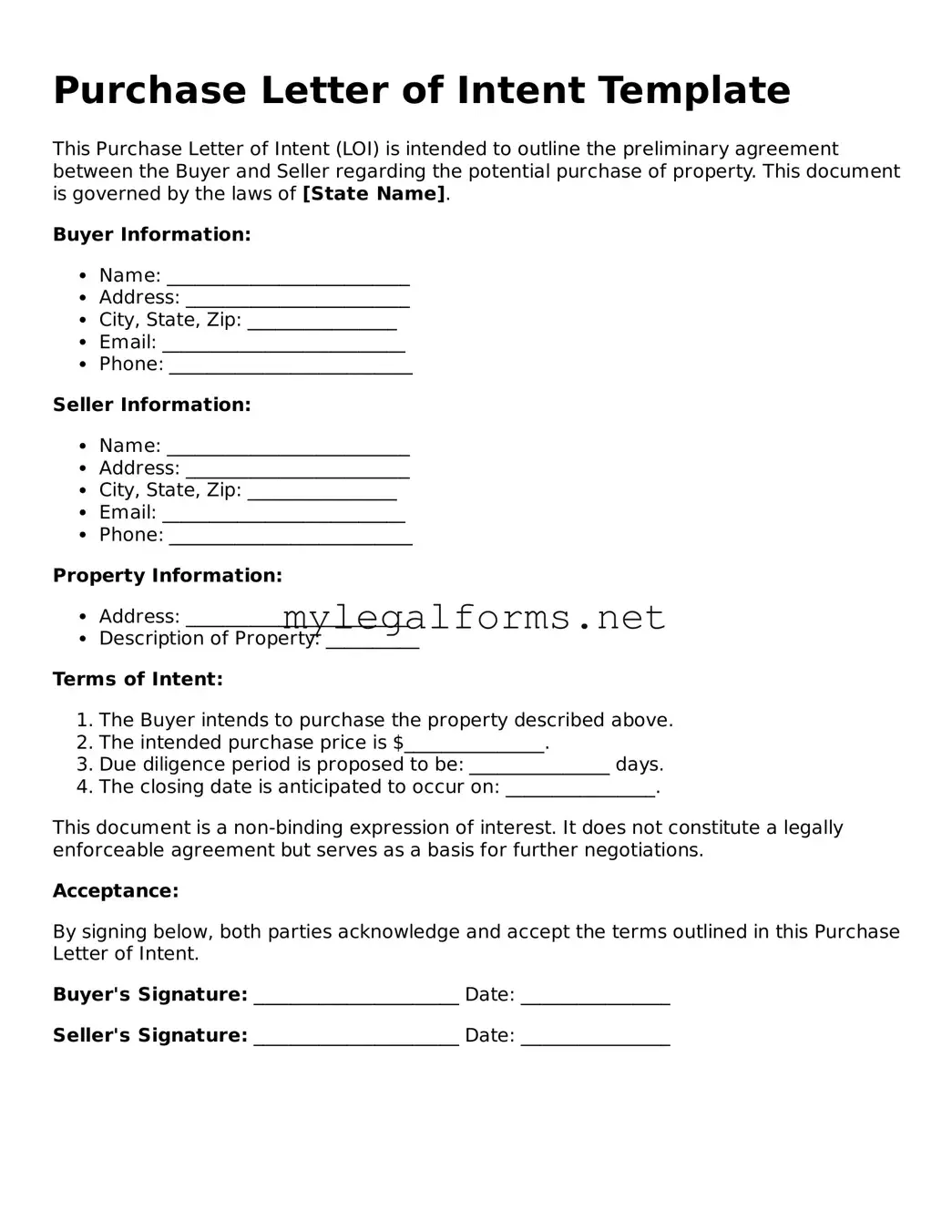Purchase Letter of Intent Template
This Purchase Letter of Intent (LOI) is intended to outline the preliminary agreement between the Buyer and Seller regarding the potential purchase of property. This document is governed by the laws of [State Name].
Buyer Information:
- Name: __________________________
- Address: ________________________
- City, State, Zip: ________________
- Email: __________________________
- Phone: __________________________
Seller Information:
- Name: __________________________
- Address: ________________________
- City, State, Zip: ________________
- Email: __________________________
- Phone: __________________________
Property Information:
- Address: ________________________
- Description of Property: __________
Terms of Intent:
- The Buyer intends to purchase the property described above.
- The intended purchase price is $_______________.
- Due diligence period is proposed to be: _______________ days.
- The closing date is anticipated to occur on: ________________.
This document is a non-binding expression of interest. It does not constitute a legally enforceable agreement but serves as a basis for further negotiations.
Acceptance:
By signing below, both parties acknowledge and accept the terms outlined in this Purchase Letter of Intent.
Buyer's Signature: ______________________ Date: ________________
Seller's Signature: ______________________ Date: ________________
